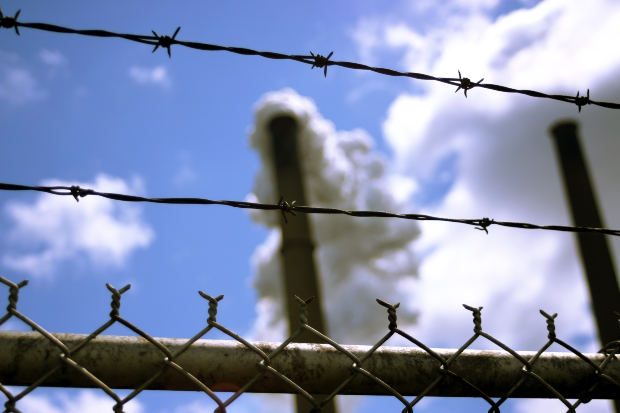
From Ukraine peace plans to Kazakh uranium—all that and more in our new nuclear digest
Our November Nuclear Digest by Bellona’s Environmental Transparency Center is out now. Here’s a quick taste of just three nuclear issues arising in U...
News

Publish date: November 12, 2014
News
On 24 October 2014 the EU reaffirmed its leadership by example position in climate change policy, as leaders of its 28 Member States reached an agreement on a 2030 Climate and Energy Framework. The EU committed itself to reducing CO2 emissions by at least 40% by 2030, while sending a clear message ahead of the United Nations Framework Convention on Climate Change (UNFCCC) negotiations in Paris next year that the 28 EU Member States are willing to increase this percentage. “The EU is making an important step towards achieving the Union’s agreed emission reductions of 80-95% in Europe by 2050” said Jonas Helseth, Director at Bellona Europa.
China and the US together account for about 45% of global greenhouse gas emissions and their recently declared commitments therefore send a strong signal towards the UNFCCC negotiations and could further catalyse the conclusion of a global climate agreement to succeed the Kyoto Protocol.
Bellona welcomes the ambitious commitments from these world leaders, particularly in light of the recent release of the Synthesis Report of the IPCC, which states that in the longer term “fossil fuel power generation without CCS would need to be phased out almost entirely by 2100” if we are to avoid a rise in mean surface temperature to 2°C and which sends the unambiguous message that postponement or inaction with regards to climate change is not an option.
Bellona President Frederic Hauge said: – This is the most important deal in the history of combating climate change. China and the US together account for nearly half of the world’s emissions and an effective climate agreement therefore depends on these two giants.
This early leadership on the part of the US and China will play a crucial role in boosting ambition by other countries, expected to announce their national emission reduction contributions in the first quarter of 2015.
The world’s largest greenhouse gas emitter, China, pledged to peak its CO2 emissions by 2030. It also set itself the goal of increasing its share of non-fossil fuels to 20% by 2030. President Obama, on the other hand, announced a target to cut US emissions by 26-28% below 2005 levels by 2025 in order to achieve “economy-wide reductions in the order of 80% by 2050”. This is a significant step forward for the US, marking the first time the president has set a goal beyond the existing 17% target by 2030. “We have a special responsibility to lead the global effort against climate change. Today, I am proud we can announce a historic agreement” said President Obama, who recognises the country’s significant contribution towards the climate change challenge as well as their responsibility to take a leadership position in combating it.
“This joint announcement provides both practical and political momentum towards a new, universal climate agreement in Paris in late 2015 that is meaningful, forward-looking and recognises that combating climate change is not a five or ten year plan—but is a long term commitment to keep a global temperature rise under 2°C throughout this century” said Christiana Figueres, Executive Secretary of the UNFCCC.
Meeting the announced targets will be a challenge for both countries
China, for instance, completes a new coal plant every eight to ten days, indicating the country’s continued reliance on coal in the foreseeable future. To meet its target, the country will have to add approximately 800-1,000 gigawatts of nuclear, wind, solar and other low-emission generating capacity by 2030, which is more than all the coal-fired power plants currently in existence in China and close to the total electricity generating capacity of the US. The two countries have agreed to enhance cooperation on clean energy and environmental protection.
In the US, Obama is facing strong opposition on climate action from Republicans, who wish to weaken the Environmental Protection Agency’s (EPA) powers to limit CO2 emissions from power plants. In order to have a realistic chance of meeting its target, the US will need to double the pace of CO2 emission reduction from 1.2% per year on average from 2005 to 2020 to 2.3 to 2.8% per year between 2020 and 2025.
Bellona is optimistic about the US being on the right track to accelerating its emission reduction efforts to meet its newly announced target. A clear sign of this are the emission performance standards (EPS) which are currently being elaborated by the EPA to reduce CO2 emissions in the power sector. These measures will add a critical regulatory driver for CO2 capture and storage (CCS) deployment (read more here). The necessity of CCS and attaining negative emissions via Bio-CCS, has been confirmed in the IPCC’s 5th Assessment Report as well as its recent Synthesis Report.

Our November Nuclear Digest by Bellona’s Environmental Transparency Center is out now. Here’s a quick taste of just three nuclear issues arising in U...

For three years now, Bellona has continued its work in exile from Vilnius, sustaining and expanding its analysis despite war, repression, and the collapse of international cooperation with Russia in the environmental and nuclear fields

The Board of the Bellona Foundation has appointed former Minister of Climate and the Environment Sveinung Rotevatn as Managing Director of Bellona No...

Økokrim, Norway’s authority for investigating and prosecuting economic and environmental crime, has imposed a record fine on Equinor following a comp...